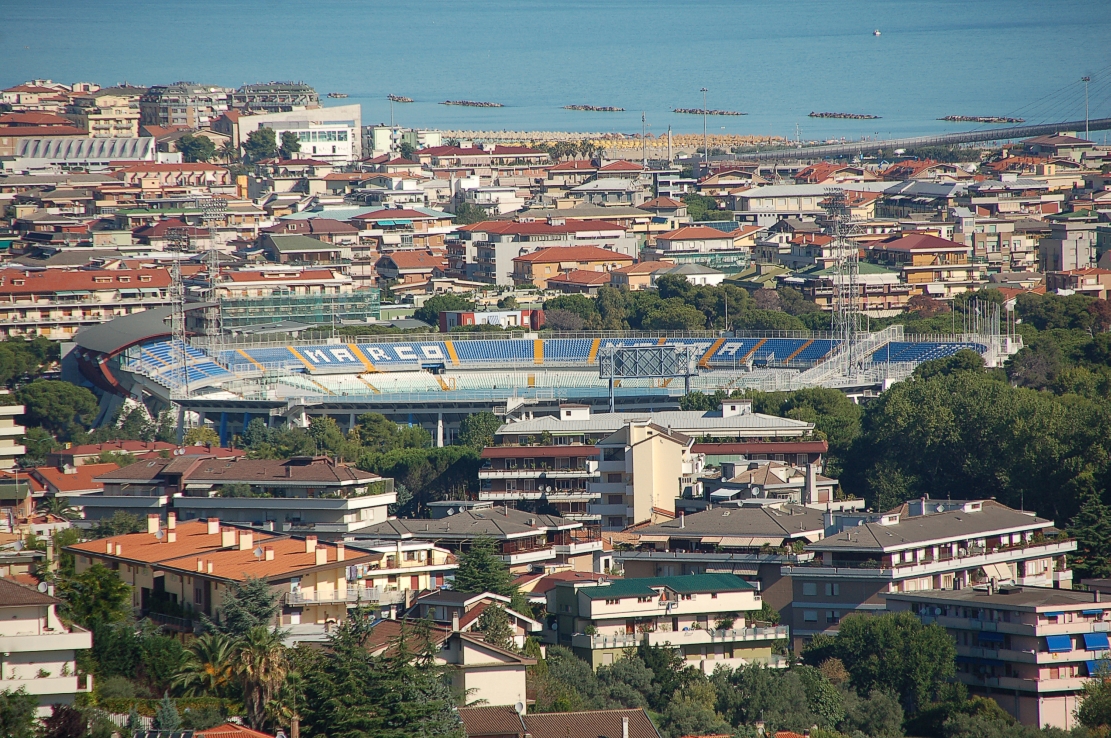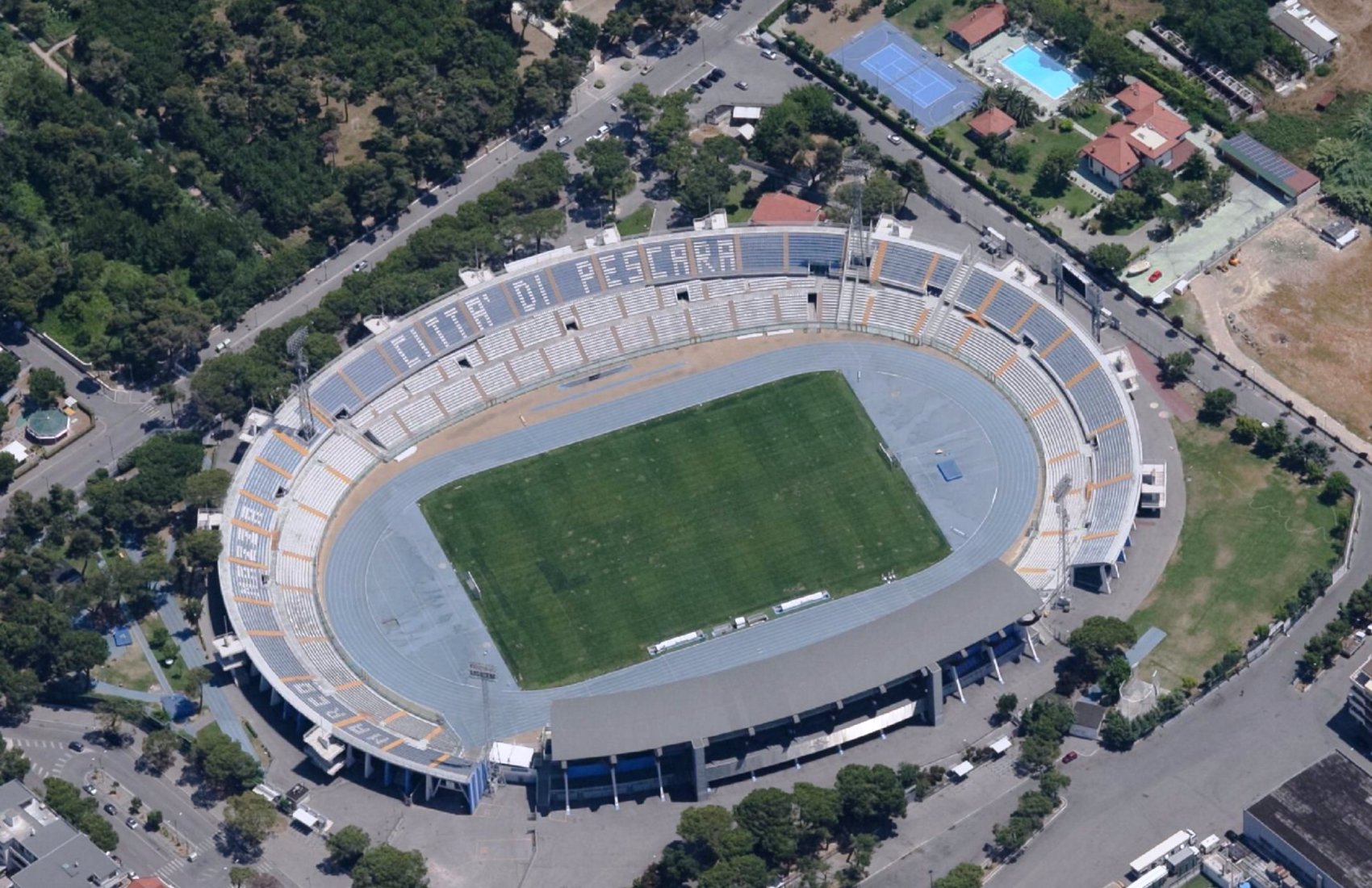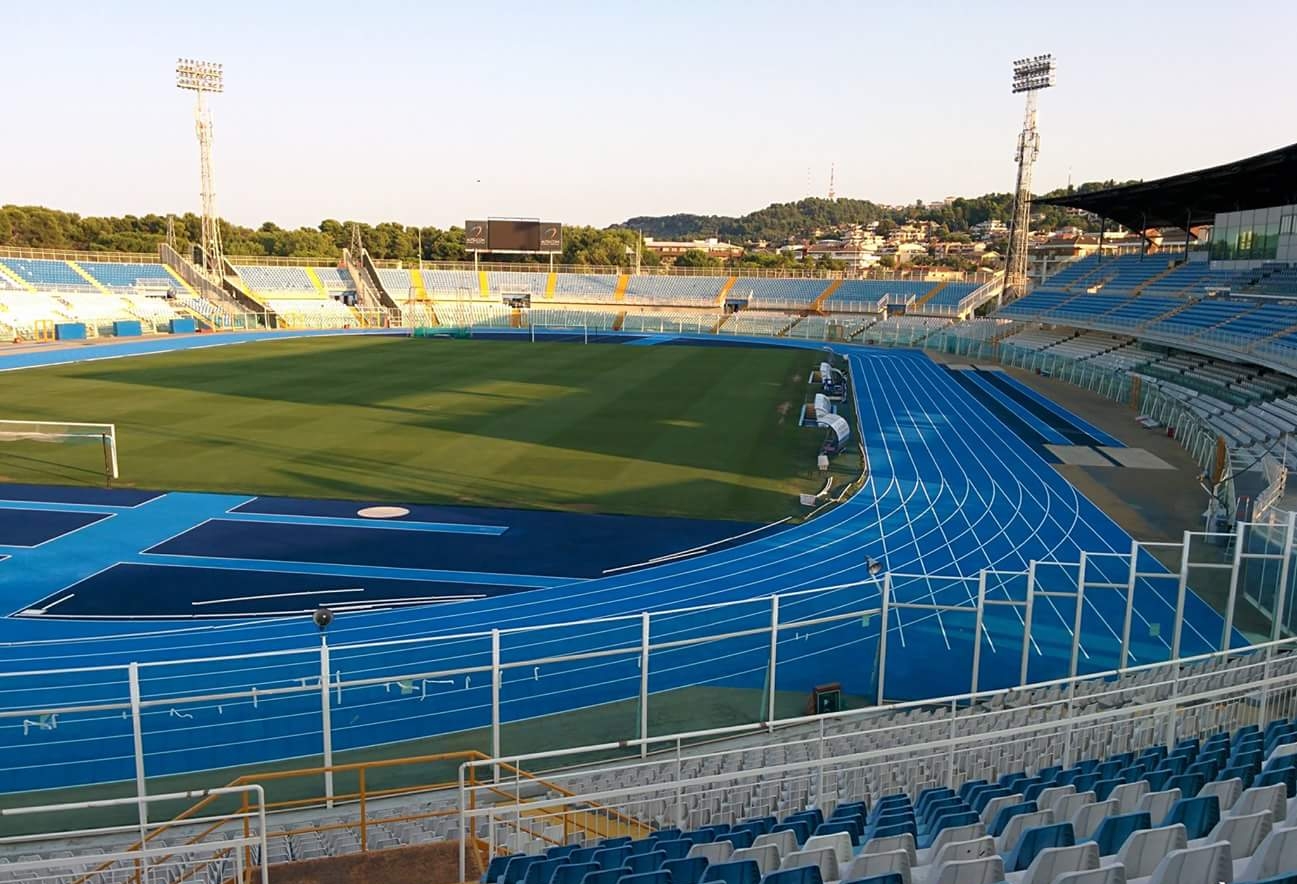Today we’re visiting a stadium that is more associated with Serie B than with Serie A (despite many top-flight matches having been played there, as well). A stadium not as old as many others we’ve explored, but still in existence for more than 50 years.
Although it was conceived and built as an athletics venue, this facility has been mainly used for football matches for several years now. So, prepare your swimsuits, because we are going very, very close to the beach – to the city of Pescara and therefore to the Stadio Adriatico, home of Delfino Pescara 1936.
The team, as the official name suggests, preceded their current stadium. Pescara originally played their home games at an old ground located where the current Piazza Primo Maggio square is, literally next to the beach.
However, a few years later, they moved to what is perhaps their most emblematic field, the Rampigna Stadium. For almost 20 years, Pescara would play in what legend says was a real and proper fortress. Sometimes hosting even up to 12000 spectators, the Rampigna was not a homologated field and a very difficult one for visitor teams to snatch points out of, either because of the loudness of the local fans or because of Pescara’s rough style of play.
The older and more nostalgic people will remember seeing the Strapaesana play here – that was the original name of Pescara in the pre-World War II era. The name could be roughly translated as “between villages,” since the team was formed only by local players from the area.

However, with the club’s increasing success during the 1940s, the Comune of Pescara started to consider funding to build a new stadium. The 1960 Olympics in Rome were the perfect occasion for this and the Italian Olympic Committee (CONI) eventually agreed onto a project for a new sports venue in Pescara.
Architect Luigi Piccinato was commissioned and took inspiration from the Stadio Olimpico in Rome to design an oval structure, surrounded by stands, with a large space for athletic activities.
If you have read some previous installments of our Temple of The Cult column, you know how we feel about sharing football with athletics in a stadium. In the case of the Stadio Adriatico, the stands were built so far from the playing field that a popular local joke goes that, from the top of them, it is easier to see the sea than the players.
The stadium was never designed with only football in mind. It was rather a matter of opportunity, as back in the days the local authorities were keen on having a big multi-purpose sports facility in the city, which could serve as a venue for the Olympic Games. Thus, although being very accessible, the Adriatico has some of the worst visibility of the playing field in the Country.
The stadium has two main stands, the Tribuna Adriatica, facing the sea, and the Tribuna Majella, facing the mountain chain from which it takes its name. The latter differed from the Stadio Olimpico model as it was built via an experimental solution featuring superimposed cantilevered reinforced concrete arches to support the upper floor.
The original plan was to have both stands built that way, but cost reduction considerations suggested a change of direction. Had the same solution been applied to the opposing stands, the total capacity of the stadium would have been 25000 – which was objectively too much for a city with a population of just 60000 back in the days. That might be one of the very few cases of a logical decision applied to the construction of a stadium in Italy…

The Stadio Adriatico was opened on December 28, 1955, three months later than planned, with a friendly match between Pescara and Como. Almost 12000 people witnessed the local Biancazzurri losing their debut at their new home.
Save for a few minor remodeling works, the structure of the stadium remained unchanged until the second half of the ‘70s, when Pescara reached the Serie A for the first time. That was quite an historical event for both the city and the Region of Abruzzo (as of today, Pescara are still the only club from Abruzzo to have ever played in Serie A) and the stadium needed an extension. A second upper ring was thus added to the Adriatico, doubling its maximum capacity to an all-time best 40000 – a record attendance reached on several occasions.
During the ‘80s, the “modernization” of professional football called for some new interventions. First, the pit separating the stands from the field was removed, since it was very dangerous both for players and spectators – who had been victims of several accidents during pitch invasions. Following the tragic Heysel disaster of 1985, UEFA forced to reduce the maximum capacity to 26000 for safety reasons. That was achieved by installing seats in the Tribuna Majella.
When Italy was chosen to host the 1990 World Cup, the city’s hope was that their stadium would be selected as an official venue. However, although it met all the requirements, the Stadio Adriatico only made it as a back-up stadium and was never used.
There was little movement in the Adriatico until 2009 when Pescara hosted the Mediterranean Games. Additional modernization works brought its capacity to 24000, giving it a somewhat striking resemblance to the Almeria stadium that had hosted the same games four earlier. We prefer to think this is just a coincidence.
The same year, the stadium was entitled to Giovanni Cornacchia, a popular local runner who died a year earlier, bringing it further away from football and closer to athletics.
Pescara fans still remember the magic trident that this stadium saw playing, when Azzurri Marco Verratti (born and raised in Pescara, current multi-champion with Paris Saint Germain), Lorenzo Insigne (current captain and star of Napoli) and Ciro Immobile (current captain of Lazio and Serie A capocannoniere) all wore the white-and-blue colors of Pescara in the 2011-2012 season, leading the club back to Serie A after 20 years under the direction of Zdenek Zeman.
An example of how passionate Pescara fans are when it comes to football was reported by Zeman himself. When the Czech coach bid farewell to the Abruzzesi to go to coach Roma, he remarked in his final press conference that he had never experienced – not even in bigger clubs – what he felt during the wild celebrations following Pescara’s much-awaited return to Serie A.
Click Below to Visit Some More Temples of The Italian Football Cult:
The San Paolo Stadium in Napoli
The Luigi Ferraris aka Marassi in Genoa
The Stadio Olimpico in Rome
The Renato Dall’Ara Stadium in Bologna
The San Nicola Stadium in Bari
The Renzo Barbera or La Favorita in Palermo
The Ennio Tardini Stadium in Parma
The Artemio Franchi Stadium in Florence
The Late Stadio Delle Alpi in Turin
Atalanta’s Gewiss Stadium in Bergamo
The Cibali or Angelo Massimino In Catania

